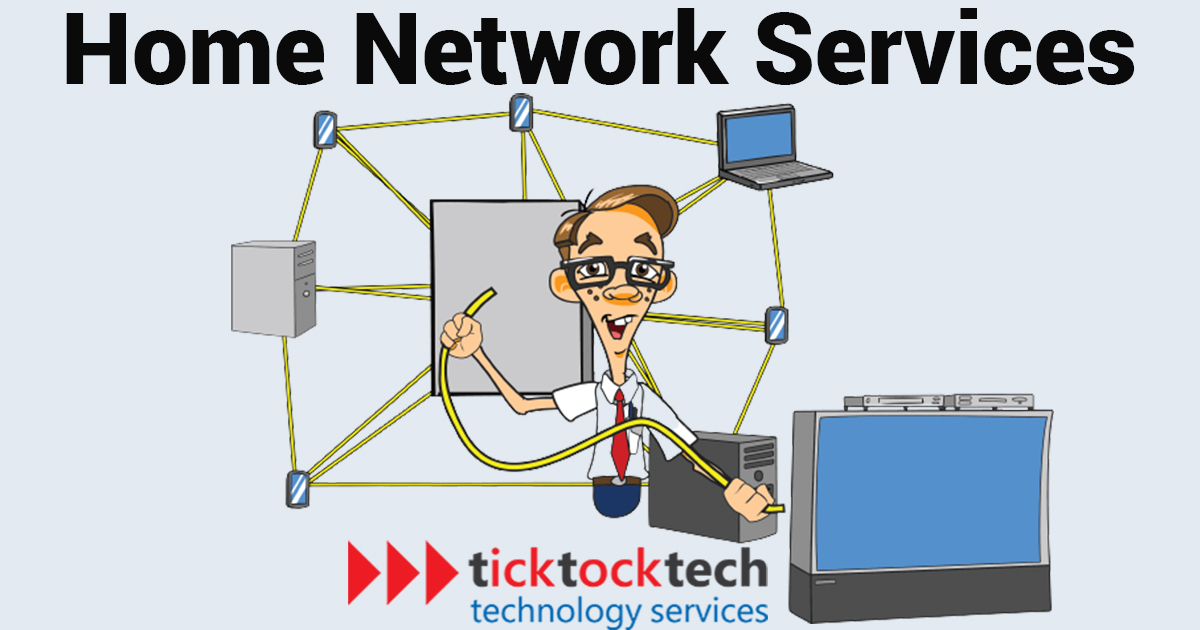A home network consists of a group of computers (or devices) that are connected together. Every device connected to a home network can interact with all of the connected devices, allowing for sharing of files, sharing a printer, media streaming, etc. Local networks have become prevalent in every home and business. It is easier to connect to the internet from multiple devices and consoles. The covid-19 pandemic has changed how we use the internet as more people work or study from home. Smart home connections have also become more common these days. A decade ago, it was common for a big family to share one computer, but now, each member may have their own devices. These additional devices will need to rely on the home network to connect to the internet.
Related Article: Data Cabling installation and Network Wiring
Types of Home Networks
There are 2 types of home networks which are the wired home network and wireless home network. In the broad sense, wired devices perform better than wireless devices, but that advantage comes at a presumably higher cost and, in most cases, less flexibility. Wireless devices could be moved about and used just about anywhere, but also have a drawback in that they may provide poor or inconsistent performance, particularly when accessing large files or engaging in video calls.
Wired Home Networks
Wired networks offer a high level of safety as well as the capacity to transfer large amounts of data in a short time. Usually, wired networks are faster than wireless networks and are less expensive. Although the cost of wired cable adds up quickly because the more devices on your network and the further apart they are, the more your network will cost. Furthermore, unless you are building a new apartment and installing network cables in the walls of the building, you will be able to see the wire cables running from room to room, and these cables can severely restrict your movement. For example, it will be difficult for a laptop to be mobile if it’s connected to the wall.
If you only want to connect two devices, all you need is a network interface card (NIC) in each device and a cable. If you want to connect multiple desktops or other devices, you need to purchase an Ethernet router. A cable is also required to connect each device to the home network.
PCs, media streaming devices, cable boxes, and even smart TVs are examples of devices that use wired cables for internet connection. Cabled devices include a connector that allows Ethernet cable connection. Many devices, including printers, come with wired and wireless connections. It is best to go with wired connections over wireless connections whenever possible because it is faster and more secure. Once you have gathered all your equipment, all that remains is to install it and set up your devices. Home networks depend on the type of network and the hardware you already have. For instance, if your computers came pre-installed with network cards, you need a router and wire cables, then configure your devices to use them. Whatever type you choose, the routers, adapters, and other hardware should come with detailed setup instructions.
Wireless Home Networks
Wireless networks as opposed to wired networks and is the easiest way to connect computers. Because there are no physical wires, the network is flexible. For instance, you can carry a laptop from one place to another without losing connection. Wireless connections are considerably slower than wired cable connections. They are also less secure unless you take precautions to safeguard your network.
Laptops, tablet devices, smartphones, media streaming devices, and smart home devices such as camera systems, lights, alarm systems, and locks are examples of typical wireless devices. The majority of home networks are hybrid environments with a mix of wired and wireless devices. A wireless router is required to set up a wireless home network. Wireless router signals can travel up to 100 feet in all directions, but the signals can be disrupted by walls. To get adequate coverage, you may need to purchase a range extender or repeater.
Conclusion
Home networking opens up an entirely new world of computing opportunities; the prospects are exciting and limitless. A home network system allows you to connect to multiple devices and access files on the network. It makes it possible to manage your security settings for all networked devices in one place. You can also print from multiple devices on a single printer. Wireless networks are getting more common due to their flexibility and ease of use. Although, wired networks tend to be faster than wireless networks, which is an important factor to consider.

